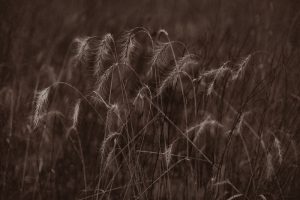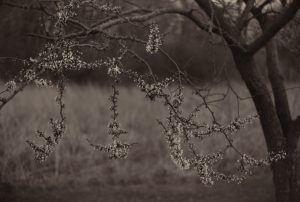
12/6/2015 3:21:00 PM, 2016, Selenium Toned Van Dyke Brown print

Randy Richmond works as a photographic artist. After spending 20 years in the dark(room) he carefully and suspiciously stepped into the light of a glowing computer monitor. His last years of strictly film based photography were spent lugging around a large Kodak 8×10 view camera. This made the transition from silver-halide to pixels a difficult one, but it also instilled in him a dedication to detail and a strong appreciation for the aesthetics of past photographic processes. Randy now pursues several photographic projects while subverting the photographic paradigm, by converting silver based materials to digital, as well as using imagery that began as pixels and transporting that imagery back in history to handmade fictional cabinet cards and handmade alternative process prints. Most recently Randy has rediscovered the challenge of the traditional single image captured in both landscape and still-life. This body of work is printed as handmade Van Dyke Brown and Cyanotype prints, and digitally on Japanese kozo papers. He utilizes this cross-pollination of photographic mediums like ingredients in a photographic cookbook to communicate concepts and observations.
Stretching the edges of the photographic image to tell a story has been the focus of Randy Richmond’s work since his student days at the University of Iowa. Randy has received the attention of several authors with his storytelling ability, resulting in several book cover contracts, including one for Beacon Press.
Randy has shown his work in numerous solo, group, invitational, and juried exhibits nationally and internationally. His work has been selected for three of the traveling small print exhibitions “Americas Biennial.” The third exhibit was a special 10th anniversary edition showcasing the best of the previous five exhibits. His interpretation of environmental issues has been the focus of special exhibits created for the Door County Land Trust, the Keeweenaw Land Trust, and the Iowa Natural Heritage Foundation and the Nahant Marsh. His work is in permanent collections at St. Ambrose University in Davenport, Iowa; the Figge Art Museum in Davenport, Iowa; The Center For Fine Art Photography in Fort Collins, Colorado; Kishwaukee College in Malta, Illinois; and Project Art of the University of Iowa Hospitals and Clinics. He balances his creative time with teaching photography as an adjunct instructor at St. Ambrose University in Davenport.